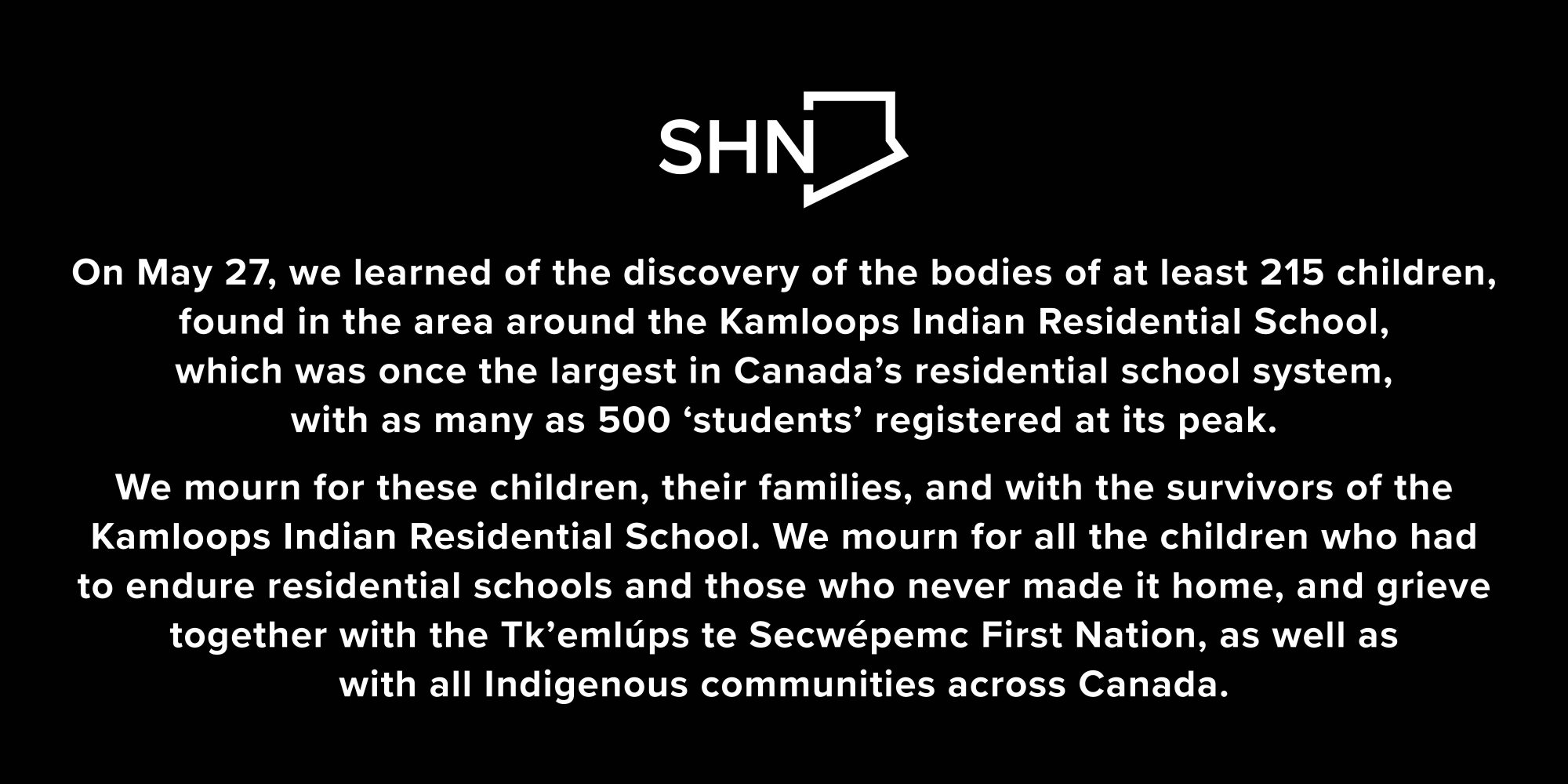Last Thursday, we learned of the discovery of the bodies of at least 215 children, found in the area around the Kamloops Indian Residential School, which was once the largest in Canada’s residential school system, with as many as 500 “students’ registered at its peak. “””””””
We mourn for these children, their families, and with the survivors of the Kamloops Indian Residential School. We mourn for all the children who had to endure residential schools and those who never made it home, and grieve together with the Tk’emlúps te Secwépemc First Nation, as well as with all Indigenous communities across Canada.
In response to the tragedy, flags at SHN have been lowered to half-mast starting Sunday, May 30 for 215 hours.
This news is a tragic reminder of the legacy of racism and the atrocities committed against Indigenous Peoples in Canada by Canadians. For many of us, Canada is our adopted home, we came here in search of a better life for ourselves and our children. Coming here we learned of Canada being a peacekeeping nation which acted as a standard-bearer for a society governed by the rule of law applied equally and without prejudice across it’s peoples – or so we were told. For others, Canada has been our home our entire lives and yet we never learned of the cultural erasure imposed on Indigenous peoples. Not in school, not in popular culture and not through family or friends.
For Indigenous people, this is their story and one which they have been trying to tell. Chief Rosanna Casimir of the Tk’emlúps te Secwépemc First Nation said of the discovery, “And it’s our truth, it’s our history and it’s something that we’ve always had to fight to prove.”
If Canada’s goal is reconciliation it will only happen with truth.
These are the facts. More than 130 residential schools operated across Canada between the 1870s and 1996, and as many as 150,000 First Nations, Métis and Inuit children were forcibly removed from their families and communities and sent to them. It was an act of attempted cultural genocide against Indigenous people and the impact continues to devastate Indigenous communities across Canada to this day.
To put these years into context, 1870-1996 would encompass over multiple generations of an Indigenous family spanning over 126 years.
This needs to be taken in context with other equally horrendous actions taken by governments and churches, such as the Indian Act, the Sixties Scoop and forced relocation, not to mention living in a society that views you as less than. All of these actions, and ones which have yet to be brought to the forefront, have led to intergenerational trauma that continues to have a significant impact on every Indigenous person, family, and community.
This news comes with shock and horror to Canadians, however it is a story which has been shared countless of times by survivors. It is incumbent on us, both as an organization and non-Indigenous individuals to educate ourselves on Canada’s past and commit ourselves to doing what is right, now and in the future.
There are a number of resources that you can use to educate yourself on the history of the crimes committed against Indigenous peoples. More importantly, once we know better we can do better. A good place to start is the Truth and Reconciliation Commission’s key findings as well as the Indian Residential School Survivor Society.
We humbly look to our Indigenous communities to help us develop a respectful relationship as we embark upon this healing journey together.

